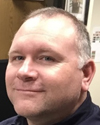Smart Restoration in Puerto Rico - The NYSUC Experience
By Johnny Price, Jeremy McVey, and Aaron Anaya
Extreme events call for extreme measures. In the aftermath of recent natural disasters, smart grids have either been unavailable or contributed little to restoration and resiliency. Like in the past, the coordination and experience of engineers and technicians have played center roles. The New York State Utility Contingent’s (NYSUC) first members were Con Edison, Orange & Rockland and the New York Power Authority. The line workers and engineers of NYSUC responded to Puerto Rico as soon as help was requested, and witnessed the fact that an unsupervised, self-healing smart grid is not yet a reality.
In modern society, electric power is a necessity as much as air, water and food. When the power supply is disrupted, lives are severely affected and there is great outcry to restore power and make the system impervious to future interruption. Modern power systems have evolved for over a century to take on their present configurations. The poles and wires are designed to take the least costly path in order to reduce the cost to the consumer. It would be naïve to think that such a complex system, built over decades by generations of engineers, could be redesigned in hours during restoration efforts in the aftermath of a weather event such as Hurricane Maria. For the responders to the aftermath of this devastation, the task was to safely restore the power as soon as possible to allow people to get back to their daily lives.
The members of NYSUC had experience with catastrophic system restoration events such as Hurricane Katrina and Superstorm Sandy, but all would agree that Hurricane Maria in Puerto Rico took those experiences to a higher level. There was a myriad of issues, which the volunteers had to face, that were usually not a cause for concern during the typical, mutual aid trip. Among those issues, the most notable would be potable water, food, lodging, security, vaccinations, and a language barrier. The logistical challenge of shipping vehicles, transporting personnel, establishing a staging area, securing fuel, and finding material all in a very short timeframe was a success story in itself. The value of the Incident Command System (ICS) cannot be understated; it served as the organizational model for command and control and created an orderly approach to a chaotic situation.
The NYSUC team was successful in building relationships with the Puerto Rico Electric Power Authority (PREPA). Open communication and trust was built by meeting with our counterparts and assuring them their concerns were ours as well. This trust was instrumental in building teamwork with PREPA already under intense scrutiny in the wake of the Whitefish deal. Obtaining materials was a logistical challenge that required an immense amount of communication and teamwork between NYSUC, Army Corp of Engineers and PREPA. Challenges emerged around every turn and were resolved through teamwork with the talented engineers and workers in PREPA.
The conditions compelled the team to consider the essential requirements to repair the power system. It was fortunate that mobile communications networks were fairly reliable when restoration efforts began. Mobile phones were extensively utilized to drop pin locations, capture damage photos with GPS tags, translate, and communicate with our PREPA counterparts. This technology undoubtedly expedited the restoration efforts and allowed for record keeping when submitting for FEMA reimbursement. In overhead work in New York City, there can be four different names for any one connector. Translating this jargon to Spanish added an additional wrinkle, often resolved by texting a picture of the equipment to our PREPA contact to obtain what was needed.
Our team consisted of engineers, supervisors, and linemen that typically work in New York City. For this reason, we felt we were well suited to restore San Juan’s metropolitan area first. PREPA was receptive to the idea and gave us circuits in historic Old San Juan. Established in 1521, Old San Juan presented some unique challenges. It is a National Historic Landmark District, so rights of way are regimented and digging in the street is not permitted. Because of this, the distribution poles are set up on top of the buildings, often out of reach of bucket trucks. Many buildings were damaged from the storm and often poles bolted to their rooftops were also destroyed. It was critical for the NYSUC team to communicate with the police to coordinate road closures and escorts to set up cranes to access these roofs. Due to the areas Historic Landmark status, the NYSUC team was denied any request to redesign the system so the system was repaired like in kind. The restoration of the Old San Juan district impressed our PREPA colleagues and set the tone for the effort as it expanded out of Old San Juan.
An integral part of the team’s success was establishing a remote operations center that controlled the switching for crews to safely do their work. Early on that process it was understood that PREPA would not have assets available to provide the planning and switching resources required for NYSUC’s operations. NYSUC’s Planning Section developed a mapping system that would allow coordination with field personnel. This involved systematically numbering the structures on maps provided by PREPA. While simple and easily overlooked, this tedious task facilitated common structure names for damage assessors, field crews, operations center dispatchers and switchers (affectionately named “Switchadors”). Switching protocols like those used in Orange & Rockland’s distribution system operations were implemented. The switching operations grew from one to five Switchadors that were integrated and trained as a team using Human Performance Improvement practices.
The Switchadors performed many critical functions in the system restoration efforts. They provided crews with a sense of familiar operational practices, allowing them to focus on the work in tough field conditions. They also provided valuable communications with the PREPA control room operations. Switchadors served as the switching authority for all NYS resources, and were also recognized by the Edison Electric Institute as the model for planning and switching operations for all utilities that joined the Puerto Rico mutual aid effort.
The operation was a success because of the ingenuity of the line workers, and the NYSUC team’s actions. The relationships the NYSUC team built throughout this process greatly assisted in restoring normalcy to the people of Puerto Rico. Our initial processes served as the model for utilities following in our footsteps. It is important work for engineers to design smart grid systems that prevent storms from causing a humanitarian crisis. However, if the next storm hits before these systems are established, those that served in the Puerto Rico mutual aid effort will be ready to help.
This article was edited by Panos Moutis.
Contributors

Johnny Price is the manager of Con Edison’s Staten Island Overhead. He has worked in various positions at Con Edison including underground electric construction, system operation, mechanical engineering, steam generation and substation construction. Last year he participated in mutual aid responses to Tampa Electric Company, Florida Power and Light and Puerto Rico Electric Power Authority. He is a mechanical engineer with a master's degree in business administration..

Jeremy McVey has spent 16 years with Consolidated Edison and Orange and Rockland Utilities, all of his time in electric operations and control centers. He has responded to several mutual aid efforts in his time, but nothing like Puerto Rico before. Jeremy spent 5 years in the Army, has a BS degree from West Point and an MBA from the University of Maryland.

Aaron Anaya, PE, PMP, is an electric operations planner for Orange & Rockland, an Instructor at School of PE, and served as the Switchador Lead during the Puerto Rico Restoration. He has held various roles in substation engineering, generation operations, and distribution operations. He is a U.S. Marine Corps veteran, has a BSEE from SUNY New Paltz, and a Master of Engineering in Electric Power from Rensselaer Polytechnic Institute. Aaron is a member of the IEEE – Eta Kappa Nu electrical engineering honor society..
To have the Bulletin delivered monthly to your inbox, join the IEEE Smart Grid Community.
Past Issues
To view archived articles, and issues, which deliver rich insight into the forces shaping the future of the smart grid. Older Bulletins (formerly eNewsletter) can be found here. To download full issues, visit the publications section of the IEEE Smart Grid Resource Center.




